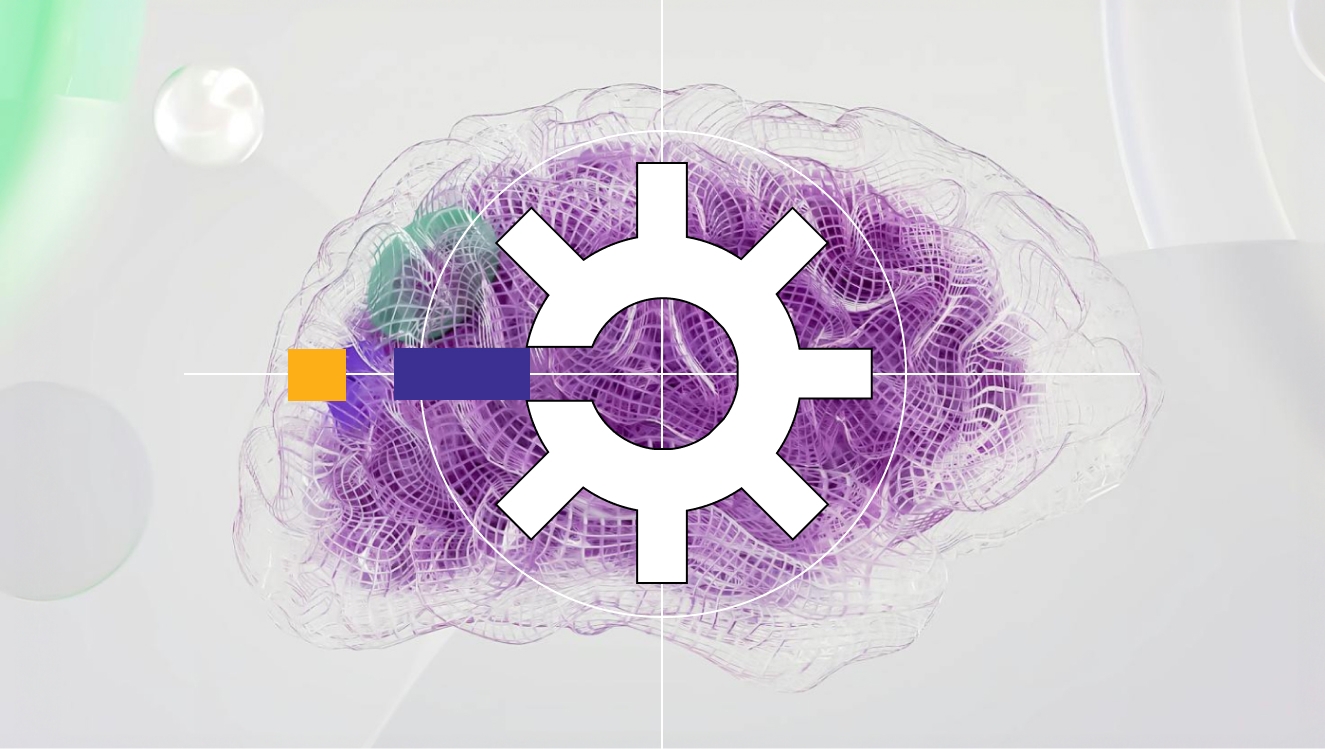How to build an ML model in 9 Steps? Explained in detail
Machine learning models are built for various purposes. How are they built? From gathering the data to deploying and monitoring the model, what step-by-step process should an organization follow? Read this blog to gain an understanding of how machine learning models are built to solve real-world problems.

Apoorva
Mar 6, 2024 |
8 mins

Step-by-step process to build the ML model
Building an ML model slightly varies based on the challenges it solves, algorithms it uses, available data, etc. However, the general approach remains the same for all ML models, which involves the following steps.
Understanding business objectives
Start with why and what with the help from a basic AI strategy framework. Why are you building an ML model? What problem does it solve? This requires working with the business stakeholders or project owners. Uncover the business problem first so you can set clear objectives for the project. This also involves thinking through to determine whether machine learning is the right approach or whether it can be solved with any other technology.
This stage should also determine
How does the industry and the business function?
What is the type of problem they are trying to solve?
Different solutions to approach the problem and the best solution among them that business stakeholders agree to?
What do they try to achieve with the current data they have collected?
Do they already have a pre-trained model that you can optimize to improve its performance?
For example, we assume that it’s a retail company selling street-style fashion items and shoes with shops all over the country. Their goal is to improve profits in the upcoming financial year. They can do it by predicting demand to maintain inventory levels and meet customer requirements optimally. They can also try customer segmentation for more targeted marketing. You choose the ideal solution depending on business stakeholders’ expectations.
This is how you can set business objectives to follow and lay the foundation for the machine learning project.
Data collection
You need data to train and test models. This is how models learn to make decisions. Your model is as good as the data you feed it with. Data collection is the process of gathering required data for the model from relevant sources so the model can learn the relationship between different variables and draw inferences about the future.
Here you will be focusing on:
Collecting required data related to the business objective and machine learning solution.
Finding out relevant sources of data (it can be from databases, data lakes, cloud applications, sensors or IoT, etc).
Whether the required amount of data is available or not. Are they structured, unstructured, or both?
Whether the available data is of good quality or not? (which will be taken care of in the next stage).
Should data labeling be done or not, as supervised machine learning models operate on labeled data?
Do you have to use a reference data set for any variable borrowed from an external source like open-source platforms and re-altered to suit the model?
Will the training data be different from real-time data fed to the model post-deployment?
Once you have answers to these questions, you can begin the data collection process following the best measures. Different types of data require different data collection tools. For example, structured data stored in RDBMS would require MySQL, and semi-structured data like sensor data, logs, etc can be NoSQL querying platforms like MongoDB.
Collected data can be safely stored in a project database until it’s ready for further pre-processing.
There are cases when the data might not be enough for the model to learn. Data augmentation is a process that helps here to increase the data sets by augmenting them using tools like TensorFlow, OpenCV, etc. As in diversifying your current dataset by adding different variants of it.
Data cleansing and processing
The collected data from the above stage may contain missing values, inaccuracies, outliers, and noise which might affect the quality of the overall data. Data quality is important if you want the model to perform properly. It can affect your model performance and create biased outputs, by skewing trends and patterns.
So, the data should undergo pre-processing which includes the following processes.
Taking care of missing values.
Checking if any re-formatting is required.
Removing unwanted items and noise that don’t contribute to the model output.
Detecting outliers and removing them.
Missing values
These are values absent in the table that have to be corrected through statistical methods or dropped altogether. With the help of Python, missing values in a dataset can be found. Depending on the type of missing value, you decide whether to remove or impute with a different value. For example, a healthcare dataset about a treatment’s response rate, where gender is missing.
You can
Delete the rows or columns with multiple missing values. (This is possible if the number of rows or columns with missing values is less than 1% or if the column has data irrelevant to the model).
Using statistical methods to impute the value with an arbitrary value, say, mean, median, or mode.
Using the sci-kit library to impute missing values.
Applying a series of interpolation methods using the pandas library.
Detecting and removing outliers
Outliers may skew results as they deviate far away from the average value. These extreme values can be capped using outlier treatment techniques. They can be detected through distribution plots. And can be treated in the following ways.
Capping which involves setting an upper limit for the value
Trimming which involves cutting down outlier values above a range.
Bucketing the outlier values separately and aligning their trend in line with other data points.
That being said, there are different types of outliers. Some outlier values differ from their previous data point vastly but with context. For example, sales data shows a peak around the beginning of a holiday weekend.
Exploratory data analysis
This step helps data scientists visualize the data to study and understand the underlying patterns, common traits, anomalies, hypothesis testing, etc. With this, data scientists can learn the relationship between variables and how one affects the other through data visualization methods like bar charts, histograms, heatmaps, scatterplots, stem-and-leaf plots, etc. This can tell you if your data can answer the questions you are trying to find and prevent any possible errors due to outliers before the modeling and statistical analysis can happen.
Types of EDA
EDA can be of four types, based on datasets and visualizations.
Univariate non-graphical - Single variable data that is analyzed to find patterns within it through summary statistics to find out the range or distribution of data, skewness, standard deviation, kurtosis, etc which can reveal outliers and help us understand the central tendency of the variable.
Univariate graphical - It’s the same as above except for the usage of graphics and visualizations like QN plots, box plots, etc to study the variable distribution.
Multivariate non-graphical - Creating visuals and charts to explain the complex relationship between multiple variables using machine learning techniques like linear regression, factor analysis, or principal component analysis.
Multivariate graphical - It’s the same as above except we use multivariate plots like line plots, scatter plots, parallel coordinate plots, Andrew plots, etc.
Common tools used for EDA by data scientists are R and Python.
Other than finding associations, connections, and patterns in the data, EDA also helps with data quality assurance (since missing values, outliers, and anomalies are clearly visible here) and draws quality insights about data.
Feature engineering
Feature engineering for machine learning involves modifying and strengthening data variables fed to the model, converting them to features to further enhance model accuracy and reliability.
Having lots of variables might slow down the model performance and skew results due to the excessive noise, null values, outliers, and other unwanted data present here. So, feature engineering is crucial as it directly determines whether the model’s output is going to solve the problem or not.
Dimensionality reduction: This is the process of reducing a high-dimensional feature set to a low-dimensional one without affecting the overall data quality. It’s done with the help of feature selection and extraction.
Feature selection is the process of picking only the important features out of the data set which has a direct impact on the model output. This is applicable to both supervised and unsupervised ML models.
Example: Imagine a data table with car model names, years bought, km it traveled, and car owner’s name. The problem is to identify the remaining useful life of models. Car owners' names are irrelevant to this problem, so they can be removed, and the remaining can be selected as features.
Feature extraction is the process of transforming variables and removing unwanted features from the data set, like how the car owners’ names are removed in the above example.
Feature transformation: Real-life data may not always be linearly distributed. But for models like linear regression, the skewness can affect the way the model learns the relationship among variables. Depending on the variable type and its skewness, we can apply a few mathematical transformations like square rooting them, squaring them, applying logs, etc so the data can become linearly distributed.
Feature scaling is when you bring a set of variables together under a similar scale, for example, on a scale of 0 to 9.
This is how feature engineering works—modifying the input data so we can train the model most accurately and get appropriate results.
Building the model
You choose the machine learning model type and algorithm based on the problem you solve.
Each method has its applications. Choosing the right model is important to receive highly accurate results. To get more desired outcomes, an ensemble of different ML models is also helpful sometimes.
The data scientist chooses the appropriate model based on the business problem and datasets. Then proceed with training the model using the training data.
The following are the common types of machine learning algorithms.
Supervised learning
Supervised learning is when you train the model with tagged input and output variables. So, the model learns the relationship between the input and output and predicts it for the dataset we feed them with.
There are two types of supervised learning: classification and regression.
They are best suited for problems like classification (filtering spam emails from regular emails), forecasting using historical data (generating sales/demand reports of the future, predicting stock prices, etc), etc.
Unsupervised learning
Unlike the previous method, here the algorithms run on unlabelled data, analyze the patterns within, and cluster them—without being trained on it.
Consider a bag full of fruits like apples, oranges, and pears. The ML algorithm can compare and learn their characteristics and separate them without being told what’s apple or what’s orange. The output can further be validated by a human, helping the model to improve its accuracy.
Due to this nature, it can solve real-world problems like customer segmentation, image detection, object recognition, anomaly detection, etc.
The different types of unsupervised learning include clustering, association, and dimensionality reduction.
Evaluating the model
This is to check if the model generates satisfactory results with optimal accuracy. Based on the outcome here, the model will be further tuned to improve its performance.
For this very purpose, data scientists split the entire dataset into training (70% of the data) and test data (30% of the data) so they can test model performance with a new dataset.
This can further be enhanced by splitting the dataset into three—training, testing, and validation.
While performing testing and validation, data scientists will keep observing things like the model’s generalization, biasedness, prediction capabilities, accuracy level, etc.
They record the true positives and negatives and false positives and negatives for every testing dataset and derive evaluation metrics from them. Example: confusion matrix that plots the number of true positives and negatives and false positives and negatives.
If the results aren’t satisfactory, they will have to choose an alternative model and repeat the steps again.
Optimizing the model
Before deployment, the model goes through iterative improvements and is fine-tuned to improve its functionality. This is what model optimization is.
This is usually done to reduce the model’s error or loss function, which is usually measured from the model’s output and the actual value for a time period.
Deploying the model
The model is fully ready to stage at this point. So, it will be deployed in a suitable production environment for end-users and generate outputs for real-time inputs. It can be a cloud platform like AWS or within the on-premise environment of the customer, or connected to a live application, keeping the computational capabilities and requirements in mind.
Once deployed, the model can work in real time or generate insights in batches.
Post-deployment, the model is continuously monitored to analyze the model’s performance and minimize its deviations as the real-time data might vary from testing data.
Importance of machine learning models for businesses
ML models are built for various use cases. It solves bottlenecks, improves work efficiency, simplifies decision-making, and automates processes in every industry and every functional area.
They help businesses harness the power of data to make data-driven decisions rather than relying on gut and intuition.
Some popular machine-learning models that businesses use
Forecasting systems
Fraud detection
Customer segmentation
Quality control and assurance
Predictive analytics
Recommendation engines
Customer support automation (chatbots)
The list goes on and on.
Let’s take a retail company for example. They need to stay on top of consumer demands which change every day. They simply can’t rely on their historical sales data as demand changes for different stores, brands, and products every day. Yet, they have to bring in line their supply chain, inventory, store supply, and marketing efforts in line with this changing demand.
Machine learning-based forecasting models can be a savior here, generating accurate sales and demand forecasting reports, helping them meet their customer demands while increasing revenue.
This is just one example. With the right data, machine learning models can be customized to solve any business problems you currently face.
Final thoughts
Out of globally surveyed companies that adopted machine learning, 80% of them reported an increase in revenue. The market is expected to grow further at a CAGR of 17.15% and reach $ 528.10 billion by 2030—shows the increasing demand for this AI-based technology. All of these stats point out how fast businesses are in adopting machine learning as a part of their operations, which makes it the right time to invest in data science.
But the path isn’t easy. Building machine learning models isn’t a simple task. Most of the machine learning models don’t make it to real-time applications due to multiple reasons—lack of clear goals, improper model selection, poor testing data, and so on.
What you need here is a team with the right expertise in building and implementing successful models for different use cases, companies, and industries. This is where datakulture can help you. With skilled data scientists, analysts, and subject matter experts, we will be able to assist you right from the data science consulting stage till deployment and continuous monitoring—with extreme transparency and strict adherence to timelines.
Send us your requirements so we can set up a detailed discovery call with you and discuss the possibilities, challenges, and potential ROI.



